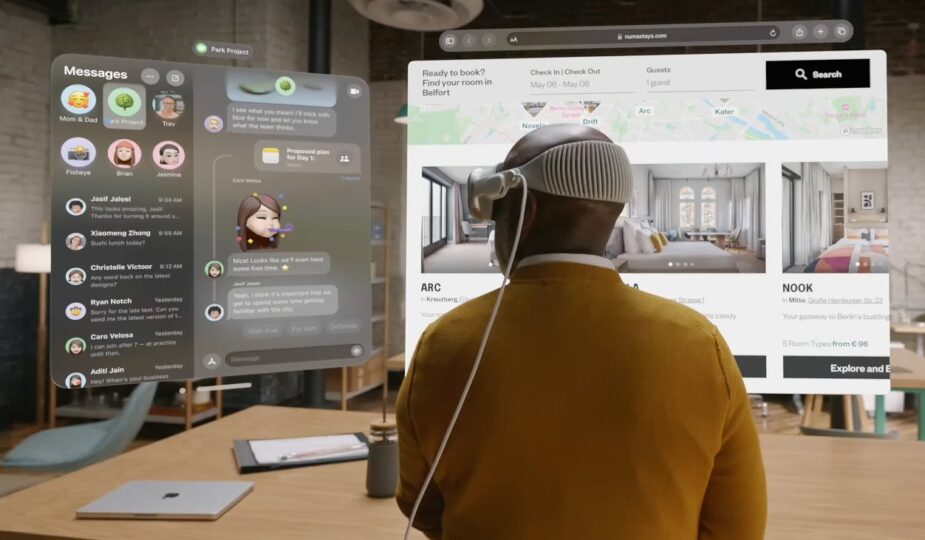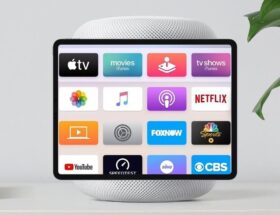Viewing information in Apple Vision Pro [Apple]
 0 Facebook Reddit
0 Facebook Reddit
Future Apple Vision Pro or iPad could display virtual object or other data to the user depending on where he is located, according to the patent, which limits the user's media playback based on his physical location.
One of the advantages of the digital age is that you can get the information you need almost anywhere. However, in some cases where data must be kept confidential between authorized personnel, it may be necessary to guard the information more closely than usual.
Companies like Apple may have a culture of secrecy that prevents ideas from being discussed or leaving a department or even a room. While this can be done relatively easily with physical objects, it is much more difficult to store data when working with it digitally.
In a patent granted to Apple by the US Patent and Trademark Office on Tuesday, the application for “Method and apparatus for spatially marking private content” describes just such a system.
The basic concept is that data, whether personal or sensitive information, cannot be seen by the user unless it is located in a specific location. For example, you can only see data when you are at home or in a certain part of the office.
This is similar in concept to some audio museum tours that detect where the visitor is before playing audio content, but in this case it will also revolve around visual information.
According to the patent, the user can be specified an area where he can view content privately. While this could be a notification about how far and in what direction they should drive, it could also appear on the display as an AR zone that they can enter.
Example images from the patent.
If the user is in the private browsing area, he will be able to see hidden data. When a person enters or leaves a region, they cause a state change that allows or denies access to that data.
Moving in and out of a region can also trigger notifications informing the user that they are gaining or losing access to data.
Although this can be used for standard files such as documents and drawings, the patent explicitly specifies use cases for augmented reality. For example, a digital object virtually located in a room may only be visible from a specific location or perspective.
The images show using an iPad to view augmented reality, similar to ARKit apps. It also explicitly mentions “extended reality (XR) content,” a “head-mounted display” such as the Apple Vision Pro, or a headset with a “transparent or translucent display.”
The patent names the inventors as: Bart Colin Trzynadlowski, Thomas G. Salter, Devlin William Chalmers, Anshu Kameshwar Chimalamarri and Gregory Patrick Lane Lutter. It was originally filed on December 14, 2021.
Apple files numerous patent applications every week, but while the presence of patents indicates areas of interest for the company, there is no guarantee that the concept will be realized. into a future product or service.
In this case, this concept could be useful for a product like Apple Vision Pro. It's possible that if someone was working from home, this could force the user to see important data from the company they're actively working for, limiting the ability of other nosy family members to catch the peak, such as when the headset is located elsewhere in the house.
Apple has also explored the idea of location tracking in the past, such as a February 2023 patent that claims HomeKit tracks users throughout the home to predict their needs.








